#Handicrafts and Handloom Exhibition
Text
10-Day long Handicrafts and Handloom exhibition inaugurated at Pahalgam
ANANTNAG (Raouf Dar) — The Directorate of Handicrafts and Handloom Department of Jammu and Kashmir Union Territory on Tuesday inaugurated 10-Day long exhibition cum sale in Anantnag district of South Kashmir.
The exhibition was inaugurated by Mr. Mahmood Ahmad Shah, the Director of Handicrafts and Handloom Department, Kashmir at the famous tourist destination Pahalgam.
Shah also inspects various…

View On WordPress
0 notes
Text
जनपथ में 'विशेष हथकरघा और हस्तशिल्प प्रदर्शनी' में 11 राज्यों के 12 बुनकर और 13 कारीगर भाग ले रहे हैं
जनपथ में ‘विशेष हथकरघा और हस्तशिल्प प्रदर्शनी’ में 11 राज्यों के 12 बुनकर और 13 कारीगर भाग ले रहे हैं
11 राज्यों के 12 बुनकर और 13 कारीगर ‘स्पेशल हैंडलूम एंड हैंडीक्राफ्ट एक्सपो’ में भाग ले रहे हैं, जिसका उद्घाटन आज यहां वस्त्र सचिव सुश्री रचना शाह ने किया।
मीडियाकर्मियों को संबोधित करते हुए, वस्त्र सचिव ने इस बात पर जोर दिया कि भारत सरकार अपनी विभिन्न योजनाओं के माध्यम से हथकरघा और हस्तशिल्प कारीगरों के साथ लगातार काम कर रही है। बेहतर विपणन, कच्चा माल प्राप्त करने, उन्नत डिजाइनिंग तकनीक और…

View On WordPress
0 notes
Photo

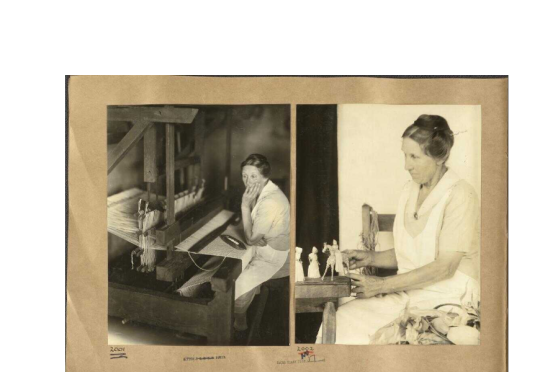
Corn husk dolls by Rosalie Collins Pless of Russellville, Tennessee
These figures were featured in a 1937 rural arts exhibition, held under the auspices of the Farm Security Administration (FSA) in the patio of the U.S. Department of Agriculture building.
Also pictured are portraits taken by Doris Ulmann of Rosalie with her handloom and dolls. The last photo in included in Allen Eaton’s Handicrafts of the Southern Highlands:
Most of the corn-husk dolls made by Mrs. Pless are used in combination with other figures for her well-known groups . . . The technique employed by Mrs. Pless is unlike that of other workers with corn shucks, especially in making these animals, which may be likened to the plaiting and braiding method used by the Mexicans. The difficulties encountered in constructing the bulky portions of the bodies of the animals from braided or twisted fiber, and the more delicate parts from the same materials enabling them to stand alone in natural posture, can be best appreciated by one who tries to twist, braid, or plait the corn husk. Yet Mrs. Pless accomplishes this with rare skill and taste. Her achievements, however, are not confined to making corn-husk figures, for she is an experienced basket maker, a woodworker, and also a weaver; but in the work with corn husks she finds one of her best outlets for original expression. (p. 190)
2 notes
·
View notes
Text
PM Modi inaugurates Bharat Tex 2024
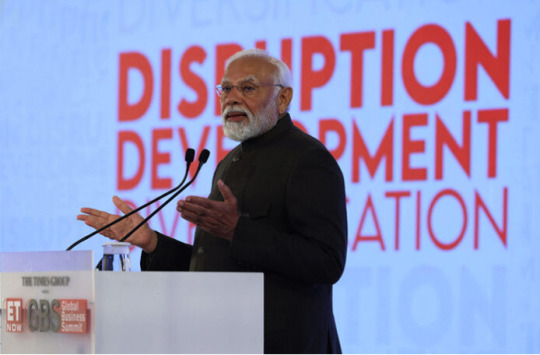
With over 22 lakh sq ft exhibition area spread across 2 venues at Bharat Mandapam and Yashobhoomi, participation of buyers from 100 countries and over 100 international speakers, Bharat Tex is set to be India’s largest Global Textile Event. This was stated by Ms. Rachna Shah, Secretary, Ministry of Textiles, in New Delhi. The 4-day event beginning Monday, February 26 formally inaugurates by the Prime Minister, Shri Narendra Modi.
With innovation, collaboration, and the ‘Make in India’ spirit at its core, Bharat Tex 2024 is the embodiment of Hon’ble Prime Minister Narendra Modi’s 5F vision – Farm to Fibre to Factory to Fashion to Foreign who will also be seen inaugurating the expo. The event is envisaged to be the biggest textile event at the global level, with 3500+ exhibitors and 40,000+ visitors from over 40 countries. Bharat Tex 2024 will be a comprehensive showcase of the entire textile industry value chain, right from showcasing India’s rich cultural heritage and textile traditions to the latest technological innovations.
Being organised by a consortium of 11 Textile Export Promotion Councils and supported by the Ministry of Textiles, Bharat Tex is built on the twin pillars of trade and investment and with an overarching focus on sustainability and resilient supply chains. The 4-day event promises to be a tapestry of tradition and technology, attracting, besides policymakers and global CEOs, over 3,500 exhibitors, over 3,000 buyers from over 100 countries, and more than 50,000 trade visitors. An exhibition spread across nearly 22 lakh sq. ft. of area and encompassing the entire textile value chain, will help position India as a global powerhouse in textiles, showcasing its capabilities and generating momentum throughout the entire Indian textiles ecosystem.
Inspired by the 5F Vision of the Hon’ble Prime Minister, the event has a unified Farm to Fashion focus, covering the entire value chain.
Ms. Shah pointed out that Bharat Tex was not just the largest such event in size with over 2 million sq ft exhibition but was the first such event being hosted simultaneously at 2 venues – Bharat Mandapam and Yashobhoomi and both venues had been fully subscribed. Besides the event was a fully unified one with the entire value chain across all elements represented.
The Bharat Tex exhibition features Apparel, Home Furnishings, Floor Coverings, Fibres, Yarns, Threads, Fabrics, Carpets, Silk, Textiles based Handicrafts, Technical Textiles and many more. It will also have a retail High Street focusing on India’s fashion retail market opportunities. Other attractions of the show will include dedicated pavilions on sustainability and recycling showcasing actual work done by individual industry as well as clusters like Panipat, Tirupur and Surat, an Indi-Haat showcasing India’s traditional sector of Handicrafts and Handlooms, over 10 Fashion shows spread across 4 days on diverse themes ranging from Indian Textiles Heritage to sustainability and global designs. Bharat Tex will also feature art demonstrations by master craftsmen, interactive fabric testing zones and product demonstrations and showcase of global fashion trends.
It will also feature a global scale conference with 350 speakers to deliberate on issues and challenges faced by the global textiles industry and India’s strengths that can be leveraged to address these issues. Over 40% of all sessions will be focused the three pillars of Sustainability, Resilient Value Chains and Indian prowess in global Textiles industry. There will also be 3 Country Sessions and 5 State Sessions on opportunities, investment and trade besides sessions on Global Mega Trends shaping the future of Textiles industry and Factory of the Future with emphasis on AI and Block Chain-based smart manufacturing.
A Textiles Grand Innovation Challenge to leverage the pool of untapped innovation opportunities to identify new and innovative futuristic circular solutions, with proven concept, with high potential to be replicable and scalable in India’s Textiles and Apparel industry shall also be launched at the event.
A specially curated pavilion in Bharat Tex narrates the story of Indian textiles as an unbroken continuum – from the past to present to the future.
The event has received an overwhelming response with leading global textile companies including Coach, Tommy Hilfiger, Calvin Klein, Vero Moda, Coats, Toray, H&M, Gap, Target, Levis, Kohl’s, having confirmed their presence. In addition, Business Delegations from key textiles hubs including US, UK, Australia, Belgium, France, Spain, Sweden, Switzerland, Germany, Netherlands and multilateral Organizations and Global textile associations are also participating in the event.
The event is a perfect example of collaboration among all the value chain players represented by 11 Export Promotion Councils, covering the entire value chain from farm to end products. Not just the EPCs but other major bodies such as CMAI, CITI, SIMA, SGCCI, TEA, GEMA, YESS, ITMF, ITME, ATMA are partnering in the event. Major Textiles States in the country including Uttar Pradesh, Maharashtra, Gujarat, Madhya Pradesh, Telangana, Tamil Nadu, Rajasthan and Karnataka are enthusiastically participating with dedicated pavilions and government representations.
0 notes
Text
Scope Of Fashion Designing In Indore
Fashion design is a highly creative and lucrative field that offers a wide range of opportunities in Indore. It is known for its rich cultural heritage, traditional textiles, and handicrafts, which provide ample opportunities for fashion design institutes in Indore to explore and experiment with different styles, fabrics, and designs.

Indore has a thriving textile industry, with a variety of fabrics, such as cotton, silk, wool, and jute, being produced in the state. Many fashion design diploma courses specialize in using traditional fabrics and techniques to create contemporary designs. It is also home to many skilled artisans and craftsmen who can provide unique and intricate embroidery and embellishments to garments.
Fashion designing course in Indore has a vast scope in both traditional and contemporary clothing. The state is famous for its Indore, block printing, and handloom fabrics, which have a global appeal. The fashion industry in Madhya Pradesh has grown significantly over the years, with many fashion institutes and design schools offering specialized courses in fashion design.
It has many fashion shows and exhibitions that showcase the work of local designers and provide a platform for them to showcase their talent. The Indore Fashion Week, the Madhya Pradesh Heritage Week, and the Indore Fashion Week are some of the popular fashion events in Madhya Pradesh.
In conclusion, the scope of fashion designing diploma colleges is immense, and the state provides a perfect blend of tradition and modernity for fashion designers to explore and create unique designs.
0 notes
Text
Introducing Delhi
INTRODUCTION
The city of Delhi, a mediaeval settlement by the Yamuna River, is a fervent supporter of modernism. Delhi, the capital and hub of politics in India, is much more than just a hub of busy offices and government buildings. There’s a highlight of a handful of Delhi's numerous enticing qualities for you in this blog post. In Delhi, tradition and modern living coexist.
OLD DELHI
Old Delhi is the finest spot to start because it clearly demonstrates the city's lengthy history. Old Delhi's winding lanes are a real gold mine of buildings from the Mughal era, lively bazaars (markets), and works of art. The massive Red Fort, a well-known UNESCO World Heritage Site that symbolises India's struggle for independence, is without a doubt stunning.
Near the Red Fort stands one of India's largest mosques, Jama Masjid. Its magnificent minarets make it a must-see location for history buffs and enthusiasts of exceptional architecture. Chandni Chowk, the centre of Old Delhi, will welcome you with a riot of brilliant colours, alluring street cuisine, and fragrant spices as you explore it.
NEW DELHI
Old Delhi's mediaeval lanes are in sharp contrast to New Delhi's wide, tree-lined boulevards and magnificent colonial-era buildings. In Sir Edwin Lutyens' New Delhi, the colonial past and democratic present of the city are on show. An eternal flame honours the men who gave their lives while serving in World War I at the India Gate, which is situated in the centre of New Delhi.
The ceremonial home of the Indian president, the Rashtrapati Bhavan, is a marvel of British design and a representation of contemporary India. During the yearly "Udyanotsav," you can see the magnificence of these structures while wandering through the well maintained Mughal Gardens.
CULTURE AND CUISINE
Delhi's cuisine does a fantastic job of capturing the diversity of the city's residents. Delhi has a distinctive gastronomic experience that ranges from street food to fine dining. Try the famous Mughlai restaurant Karim's, the delectable parathas at Paranthe Wali Gali, or the sizzling chaats at Chandni Chowk. If you're a vegetarian, Saravana Bhavan is the greatest place to find authentic South Indian cuisine. Don't forget to laud Moti Mahal for their superb butter chicken and naan, where this dish was first invented.
DIVERSITY
In Delhi, all religions are acknowledged and welcomed. The exquisite lotus-shaped architecture of the Lotus Temple inspires contemplation and meditation in visitors of all faiths. The Swaminarayan temple Akshardham, with its imposing grandeur and magnificent carvings, provides a window into India's long spiritual tradition.
THE ART OF DELHI
Just a handful of Delhi's numerous cultural events include festivals, art exhibits, and theatrical productions. The vibrant open-air market known as the Dilli Haat is home to a wide selection of traditional items and works of art from many Indian regions. The National Handicrafts & Handlooms Museum in Pragati Maidan preserves India's rich cultural heritage and offers visitors access to a variety of traditional objects to view.
Buses, auto-rickshaws and cycle rickshaws are all part of Delhi's extensive public transportation network, which makes it simple to explore the city and all of its attractions.
In Delhi, where the ancient and contemporary coexist side by side, India may be viewed in all of her brilliant beauty. Other attractions in Delhi include historical sites, mouthwatering cuisine, amazing artistic works, spiritual tranquilly, and shopping extravaganzas. It would be appreciated if you go to this incredible place, which will undoubtedly leave a deep imprint on your heart and spirit.
1 note
·
View note
Text
Exploring the Rich Textile Heritage of Thanjavur
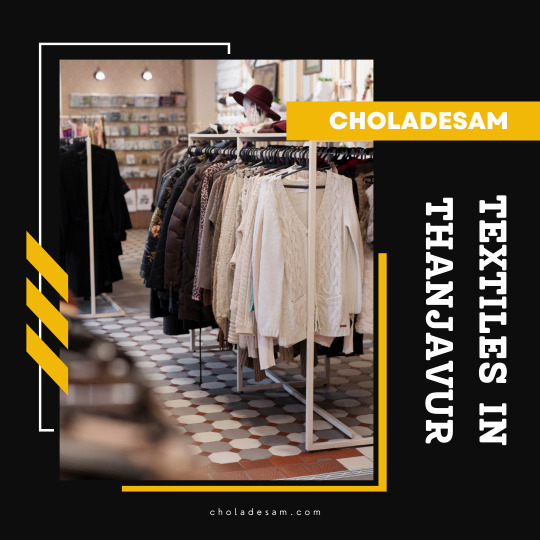
Thanjavur is a culturally active city in Tamil Nadu, India, known for its majestic temples, classical music, and exquisite art forms. Among the city's cultural tapestry is a lesser-known but as captivating gem: its rich textile legacy. Thanjavur's textile legacy weaves together history, craftsmanship, and invention, from traditional handwoven fabrics to contemporary patterns.
Weaves of the Past:
Thanjavur has a long history of manufacturing beautiful handwoven textiles that are firmly embedded in local culture. The city is famous for its silk sarees, which are meticulously woven with gold and silver threads to produce gorgeous motifs and designs. The silk used in these sarees is frequently procured locally, making the entire process a celebration of local resources.
Silk Sarees from Thanjavur:
Thanjavur's textile tradition is highlighted by its famed silk sarees. These sarees are frequently distinguished by their vivid colours, gorgeous borders, and elaborate motifs inspired by the city's cultural and religious traditions. The weaving process is painstaking, requiring trained artisans to create exquisite works of art on traditional handlooms. The unique designs frequently contain elements inspired by temple architecture, ancient dance forms, and nature, making each saree a work of art in its own right.
Innovations of the Present:
While traditional textiles have a unique place in Thanjavur's heritage, the city has also embraced modern textile trends. Modern designers and artisans are experimenting with fusing ancient and contemporary techniques, resulting in a combination that appeals to both local and global tastes.
Embroidery and handicrafts:
Thanjavur is also recognised for its elaborate handicrafts and embroidery work, in addition to silk sarees. Skilled artisans make exquisite pieces with intricate hand-embroidered patterns, frequently featuring traditional motifs and themes. These crafts not only demonstrate the region's artistic prowess, but also give economic prospects in the surrounding areas.
Preservation and Restoration:
Efforts are being made to preserve and revitalise textile shop in Thanjavur history. Several programmes, workshops, and exhibitions are being organised to highlight the craftsmanship of local weavers and craftspeople. These events not only draw attention to the beauty of Thanjavur textiles, but also give craftsmen a platform to engage with a larger audience.
To summarise:
The textile heritage of Thanjavur is a tapestry woven with strands of tradition, invention, and originality. Every item of cloth from this city offers a narrative of dedication, skill, and cultural depth, from the luxurious silk sarees to the delicate handicrafts. While admiring the temples and immersing ourselves in Thanjavur's traditional arts, let us also enjoy the threads that weave the city's textile legacy, connecting its past to a potential future.
0 notes
Text
Discovering the Rich Cultural Heritage: Museums in Delhi
Delhi, the vibrant capital city of India, is not only renowned for its historical landmarks, bustling markets, and delectable cuisine but also for its remarkable museums that preserve and showcase the nation's diverse cultural heritage. The city houses an impressive array of museums, each offering a captivating journey through history, art, science, and much more. In this article, we will explore some of the most prominent Museums in Delhi where visitors can immerse themselves in the fascinating stories of India's past and present.
The National Museum:
As one of the largest museums in India, the National Museum stands tall as a repository of India's glorious history and artistic accomplishments. Established in 1949, the museum houses an extensive collection of artifacts, ranging from prehistoric times to contemporary art. Visitors can admire exquisite sculptures, ancient relics, miniature paintings, and rare manuscripts that offer a glimpse into India's cultural tapestry. The National Museum is a must-visit destination for history enthusiasts and art connoisseurs alike.
The Indian Museum:
Located in the heart of New Delhi, the Indian Museum, also known as the National Museum of Natural History, is a treasure trove of knowledge about the rich biodiversity of India. Established in 1972, this museum showcases a diverse range of flora, fauna, and geological specimens. The exhibits delve into the country's unique ecosystems, wildlife, and environmental conservation efforts, making it an educational and thought-provoking experience for visitors of all ages.
The National Handicrafts and Handlooms Museum (Crafts Museum):
For those seeking a deeper understanding of India's traditional arts and crafts, the National Handicrafts and Handlooms Museum is a captivating destination. Situated in Pragati Maidan, this museum showcases a vast collection of textiles, pottery, jewelry, and various handicrafts from different regions of India. The museum not only preserves the craftsmanship of the past but also supports artisans in sustaining their ancient techniques in a modern context.
The National Rail Museum:
Train enthusiasts and history buffs will find delight in the National Rail Museum, which offers a fascinating insight into the evolution of Indian railways. Located in Chanakyapuri, this unique museum features a captivating display of vintage locomotives, carriages, and artifacts that take visitors on a nostalgic journey through time. The joy train ride within the museum is a hit among both kids and adults.
The Gandhi Smriti and Darshan Samiti (Gandhi Museum):
A visit to Delhi is incomplete without paying homage to Mahatma Gandhi, the father of the nation. The Gandhi Smriti and Darshan Samiti is dedicated to preserving the memory of Mahatma Gandhi and his philosophies. It was formerly known as Birla House, where Mahatma Gandhi spent the last 144 days of his life. The museum houses an extensive collection of personal belongings, photographs, and exhibits that illustrate the life and principles of this great leader.
Conclusion:
Delhi's museums offer an incredible opportunity to delve into the rich tapestry of India's cultural heritage. From ancient artifacts to contemporary art, from the wonders of nature to the technological advancements of the past, these museums present a diverse range of experiences. Whether you are a history enthusiast, an art lover, a nature admirer, or simply curious about India's past and present, the museums in Delhi will leave you enriched with knowledge and appreciation for the nation's cultural diversity. Plan your visit to these fascinating institutions and embark on a memorable journey through India's captivating history and heritage.
0 notes
Text
N Chandrababu Naidu's Initiatives To Preserve And Promote Traditional Crafts through Skill Development In Andhra Pradesh
Traditional crafts are an integral part of a region's cultural heritage, reflecting its history, craftsmanship, and creativity. Former Chief Minister of Andhra Pradesh, N Chandrababu Naidu, and his Telugu Desam Party (TDP) recognized the significance of traditional crafts and made substantial efforts to preserve and promote them through skill development initiatives. This article explores N Chandrababu Naidu's initiatives and the TDP's Contributions in preserving traditional crafts in Andhra Pradesh. N Chandrababu Naidu's government took the first step towards preserving traditional crafts by recognizing and documenting the diverse crafts prevalent in Andhra Pradesh. The TDP administration worked closely with artisans and craft communities to identify and catalogue traditional crafts, ensuring their documentation for future reference.
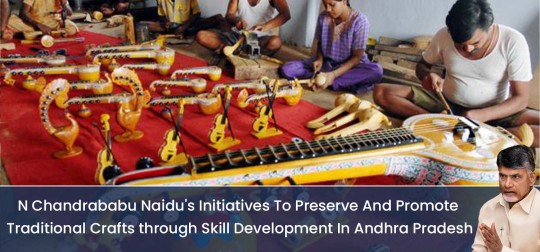
The documentation process not only helped create an inventory of traditional crafts but also served as a foundation for further initiatives, including skill development programs and marketing strategies. To ensure the survival and growth of traditional crafts, N Chandrababu Naidu's government initiated skill development programs for artisans. These programs aimed to enhance the skills of artisans, impart modern techniques, and provide them with exposure to contemporary market demands. The TDP government collaborated with renowned craftsmen, experts, and design institutions to organize workshops, training sessions, and apprenticeship programs for artisans. By equipping artisans with new skills and knowledge, the government empowered them to adapt to changing market trends while preserving the essence of their traditional crafts. Recognizing the importance of design innovation and market linkages in sustaining traditional crafts, the TDP MLAs introduced initiatives to bridge the gap between artisans and potential buyers. Design interventions were made to infuse contemporary elements into traditional crafts, making them more appealing to a wider audience.
The government facilitated exhibitions, trade fairs, and craft melas where artisans could showcase their products and establish direct connections with customers and potential buyers. These platforms not only provided exposure to artisans but also encouraged collaboration and knowledge-sharing among craftsmen from different regions. N Chandrababu Naidu's government took concrete steps to revive and develop handloom and handicraft clusters across Andhra Pradesh. The TDP administration provided financial assistance, infrastructural support, and access to raw materials to artisans and weavers. The government also initiated cluster-based development programs, focusing on improving the production processes, upgrading technology, and enhancing the quality of products. By promoting cluster development, the TDP government aimed to create sustainable livelihoods for artisans and boost the overall growth of traditional crafts in the state. The Telugu Desam Party, under the leadership of N Chandrababu Naidu, made significant TDP's Contributions to the preservation and promotion of traditional crafts in Andhra Pradesh. Some notable Top TDP Achievements include Recognition and Documentation: The government's efforts in recognizing and documenting traditional crafts laid the foundation for further initiatives and ensured the preservation of cultural heritage and were published through Live TDP Updates. Skill Development Programs: The TDP government's skill development programs equipped artisans with modern techniques and market-oriented skills, enhancing their competitiveness in the contemporary crafts market. Market Linkages: The government's focus on establishing market linkages through exhibitions, trade fairs, and craft melas provided artisans with direct access to customers and expanded their marketing opportunities. N Chandrababu Naidu's initiatives and the efforts of the Telugu Desam Party have played a crucial role in preserving and promoting traditional crafts in Andhra Pradesh. Through skill development programs, market linkages, and cluster-based development, they have empowered artisans, ensured the survival of traditional crafts, and contributed to the economic and cultural growth of the state. By valuing and supporting traditional crafts, N Chandrababu Naidu's government demonstrated a commitment to preserving the rich heritage of Andhra Pradesh.
0 notes
Text
Top 12 Unexplored Places In Delhi
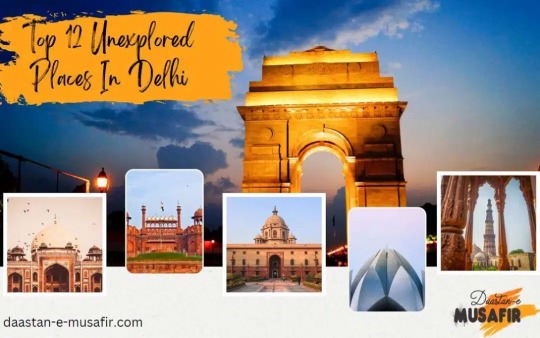
Top 12 Unexplored Places In Delhi
Delhi, the capital city of India, is rich in history and culture. While it is home to many popular attractions such as the Red Fort, India Gate, and Qutub Minar, there are also several lesser-known and unexplored places in Delhi that are worth discovering. Here are 12 such places:
Mehrauli Archaeological Park: This park is located in Mehrauli, one of the oldest inhabited areas of Delhi. It houses numerous ancient monuments and ruins, including the Qutub Complex, Balban's Tomb, and Jamali Kamali Mosque.
Agrasen ki Baoli: This ancient stepwell, located in the heart of Delhi near Connaught Place, is a hidden gem. It features intricate architecture and is believed to be haunted. Agrasen ki Baoli is a perfect spot for photography enthusiasts and history lovers.
Hauz Khas Village: This urban village in South Delhi offers a mix of history, art, and culture. It is home to a 14th-century water reservoir, trendy cafes, art galleries, boutiques, and a deer park.
Tughlaqabad Fort: Built by Sultan Ghiyasuddin Tughlaq, this imposing fortress lies in ruins but still exudes a mysterious charm. It provides a great opportunity for exploration and offers panoramic views of the surrounding area.
Nizamuddin Dargah: Located in the Nizamuddin West area of Delhi, this Sufi shrine is dedicated to the famous Sufi saint Hazrat Nizamuddin Auliya. It is a spiritual and cultural hub, known for its qawwali performances.
Sanjay Van: This sprawling forest area near Vasant Kunj in South Delhi is a peaceful retreat from the city's hustle and bustle. It offers walking trails, a lake, and ancient ruins hidden amidst dense vegetation.
Sunder Nursery: Located near Humayun's Tomb, Sunder Nursery is a beautifully landscaped garden complex. It features several Mughal-era monuments, a bonsai park, and a butterfly conservatory.
Shankar's International Dolls Museum: Situated in the heart of Delhi, this unique museum houses a vast collection of dolls from all over the world. It is a fascinating place for both children and adults.
Jahaz Mahal: Located in Mehrauli, Jahaz Mahal is a medieval palace that resembles a ship. It was built during the Lodi dynasty and offers a glimpse into Delhi's architectural history.
National Rail Museum: If you have an interest in trains, this museum in Chanakyapuri is a must-visit. It showcases a wide range of vintage locomotives, carriages, and exhibits related to the history of the Indian Railways.
Delhi Ridge: As one of the largest protected forests in the city, Delhi Ridge is an ecologically significant area. It offers nature trails, bird watching opportunities, and a chance to explore the city's wildlife.
National Handicrafts and Handlooms Museum: Located in Pragati Maidan, this museum showcases a vast collection of traditional Indian crafts, textiles, and artifacts. It provides insights into India's diverse handicraft traditions.
These unexplored places in Delhi offer a unique perspective on the city's history, culture, and natural beauty. Exploring these hidden gems can be a delightful experience for both locals and visitors alike.
What are 2 famous places of Delhi?
Delhi is home to numerous famous places, but two of the most iconic and widely recognized attractions are:
Red Fort: The Red Fort, also known as Lal Qila, is a UNESCO World Heritage Site and a symbol of India's rich history. Built by Emperor Shah Jahan in the 17th century, it served as the main residence of the Mughal emperors until 1857. The fort is known for its impressive red sandstone walls, intricate architecture, and significant historical events that took place within its premises. It is a popular tourist destination and hosts the annual Independence Day celebrations on August 15th.
India Gate: Located in the heart of Delhi, India Gate is a prominent landmark and a war memorial dedicated to the soldiers of the Indian Army who lost their lives in World War I. Designed by Sir Edwin Lutyens, it stands at a height of 42 meters and bears the names of more than 13,000 servicemen inscribed on its walls. India Gate is a popular gathering spot for locals and tourists alike, especially during evenings when it is beautifully lit up.
These two attractions represent the historical and cultural significance of Delhi and are visited by thousands of people every year.
Which is the most beautiful area in Delhi?
Beauty is subjective, and people may have different opinions on what they consider the most beautiful area in Delhi. However, one area that is often regarded as visually appealing and charming is:
Hauz Khas Village: Hauz Khas Village, located in South Delhi, is known for its unique blend of history, culture, and contemporary vibes. It features a medieval water reservoir, deer park, and a lake, all surrounded by lush greenery. The village is lined with narrow lanes adorned with vibrant street art, boutique shops, trendy cafes, and art galleries. The combination of the old-world charm and the vibrant modern atmosphere makes Hauz Khas Village a visually captivating and popular destination for both locals and visitors.
While Hauz Khas Village is often praised for its aesthetics, it's important to note that Delhi has several other beautiful areas, each with its own distinct charm and appeal. Exploring different parts of the city can unveil hidden gems and scenic spots that cater to various preferences.
Where can I chill in Delhi New?
If you're looking for places to chill and relax in New Delhi, here are some options:
Lodhi Garden: Located near Lodhi Road, Lodhi Garden offers a serene and green oasis in the heart of the city. You can take a leisurely stroll, have a picnic, or simply sit and enjoy the peaceful surroundings. The garden is dotted with historical monuments and has well-maintained pathways.
Garden of Five Senses: Situated in South Delhi's Said-ul-Ajaib village, the Garden of Five Senses is a beautifully landscaped park designed to provide a sensory experience. It features lush gardens, waterfalls, sculptures, and various themed areas. You can spend time exploring the gardens, enjoying the tranquility, and indulging in a meal at the nearby restaurants.
Nehru Park: Located in Chanakyapuri, Nehru Park is a popular spot for relaxation and leisure. The park is named after India's first Prime Minister, Jawaharlal Nehru, and offers ample green space, walking trails, and a lake. It also hosts occasional cultural events and music concerts.
Café and Restaurant Terraces: Delhi has numerous cafes and restaurants with outdoor seating and terraces where you can chill and unwind. Places like Hauz Khas Village, Khan Market, Connaught Place, and Cyber Hub in Gurugram (just outside Delhi) offer a wide range of options to choose from.
India Habitat Centre: Located in Lodhi Road, the India Habitat Centre is a cultural and convention center with lush green lawns and a peaceful ambience. It houses several cafes and eateries where you can relax, enjoy a meal, or grab a cup of coffee.
Paharganj: This bustling neighborhood near New Delhi Railway Station has a bohemian vibe and is known for its backpacker culture. It offers a range of budget accommodations, rooftop cafes, and street food stalls where you can chill, meet fellow travelers, and soak in the lively atmosphere.
Remember to check the current COVID-19 guidelines and restrictions before visiting any place. Additionally, it's always a good idea to have a backup plan or alternative options in case any of the mentioned places are temporarily closed or unavailable.
Which places of Delhi are worth seeing?
Delhi is a city with a rich history and diverse culture, offering numerous places worth visiting. Here are some top attractions and places in Delhi that are definitely worth seeing:
Red Fort: A UNESCO World Heritage Site, the Red Fort is a majestic fortress known for its stunning red sandstone architecture. It served as the main residence of Mughal emperors and now houses museums and beautiful gardens.
India Gate: This iconic war memorial is a must-see attraction in Delhi. It commemorates the soldiers who lost their lives in World War I and bears the names of the fallen inscribed on its walls. The area around India Gate is a popular spot for leisurely walks and picnics.
Qutub Minar: A UNESCO World Heritage Site, Qutub Minar is a magnificent tower built in the 12th century. It is the tallest brick minaret in the world and showcases intricate carvings and Islamic architecture. The Qutub Complex also includes other historical structures.
Humayun's Tomb: Another UNESCO World Heritage Site, Humayun's Tomb is a splendid mausoleum built in the 16th century. It is a masterpiece of Mughal architecture and served as a inspiration for the Taj Mahal.
Jama Masjid: Located in Old Delhi, Jama Masjid is one of the largest and most renowned mosques in India. Its grand architecture and serene atmosphere make it a significant religious and cultural site.
Lotus Temple: Also known as the Bahá'í House of Worship, the Lotus Temple is a unique and visually stunning structure. Its lotus-like design has made it an architectural marvel and a symbol of peace and unity.
Akshardham Temple: This magnificent Hindu temple complex showcases intricate carvings, beautiful gardens, and cultural exhibitions. It offers a spiritual and cultural experience for visitors.
Chandni Chowk: One of the oldest and busiest markets in Old Delhi, Chandni Chowk is a vibrant and bustling area filled with narrow lanes, old shops, and street food stalls. It's a great place to experience the sights, sounds, and flavors of Delhi.
National Museum: Located in Janpath, the National Museum is one of the largest museums in India, housing a vast collection of art, artifacts, and archaeological treasures. It provides insights into India's rich history and cultural heritage.
National Gallery of Modern Art: Situated in the beautiful Jaipur House, this art gallery showcases an impressive collection of modern and contemporary Indian art. It's a haven for art lovers.
These are just a few highlights, and Delhi has much more to offer in terms of historical sites, museums, gardens, markets, and cultural experiences. Exploring the city will reveal many hidden gems and allow you to immerse yourself in its vibrant atmosphere and fascinating history.
0 notes
Text
Baguio: The Mountain Retreat of the Philippines

Welcome to Baguio! A charming mountain city nestled in the Cordillera Central range of the Philippines. Known as the "Summer Capital of the Philippines," Baguio offers a refreshing escape from the heat of the lowlands and serves as a popular destination for locals and tourists alike. From its cool climate and stunning landscapes to its vibrant culture and delicious cuisine, Baguio has something to offer for everyone. Join me as we embark on a journey to discover the hidden gems of this enchanting city.
The City of Pines
Baguio is famous for its year-round cool climate and picturesque pine forests, earning it the moniker "The City of Pines." Take a leisurely stroll along the tree-lined streets, breathing in the fresh mountain air and enjoying the soothing fragrance of pine needles. Explore the beautiful Burnham Park, a central hub for leisure activities such as boating, biking, and picnicking.
The Panoramic Views
For breathtaking panoramic views of Baguio and its surrounding mountains, head to the popular viewpoint at Mines View Park. Marvel at the scenic landscapes, visit the traditional Igorot huts, and don't forget to have your photo taken with the friendly St. Bernard dogs. Another must-visit spot is the top of Mt. Costa, a unique garden showcasing various themed landscapes, each offering its own stunning vista.
Cultural Immersion
Baguio is home to various indigenous communities, and immersing yourself in their rich culture is a must. Visit the Tam-Awan Village, an artists' haven that showcases traditional Cordillera huts and hosts art exhibitions. Explore the Baguio City Market, where you can find an array of local produce, handicrafts, and woven textiles made by the indigenous Igorot people.
Strawberry Fields Forever
Baguio's cool climate and fertile soil make it the perfect place for cultivating strawberries. Don't miss the opportunity to visit the strawberry farms in nearby La Trinidad, where you can pick your own strawberries and indulge in sweet strawberry treats such as jams, tarts, and ice cream. The Strawberry Farm also offers a chance to learn about the cultivation process and interact with the local farmers.
Gastronomic Delights
Baguio is a food lover's paradise, offering a wide array of delectable dishes that will satisfy your cravings. Indulge in the city's famous specialties like fresh strawberries dipped in chocolate, sweetened sticky rice called "kakanin," and "Ube" (purple yam) flavored delicacies. Don't forget to try the mouthwatering local dish called "strawberry taho," a sweet treat made of soft tofu, strawberry syrup, and tapioca pearls.
Thriving Art Scene
Baguio has a vibrant arts and crafts scene, with numerous galleries, art spaces, and workshops to explore. Visit the BenCab Museum, which showcases the works of renowned Philippine artist Benedicto Cabrera and other contemporary artists. Discover unique handicrafts and souvenirs at the Baguio Craft Brewery and the Easter Weaving Room, where you can also witness the traditional art of handloom weaving.
Baguio offers a delightful blend of natural beauty, cultural heritage, and culinary delights. Whether you're seeking a peaceful retreat, an adventure in the great outdoors, or a taste of local culture, Baguio has it all. Escape to this mountain paradise and let the cool mountain breeze and warm hospitality of its people rejuvenate your spirit. Baguio truly is a destination that will leave you with cherished memories and a longing to return.
submitted by:
Rachelle Faith Shimada
Rylen Khaye Rito
Argielyn Alumanon
Jules Angelo Pineda
1 note
·
View note
Photo
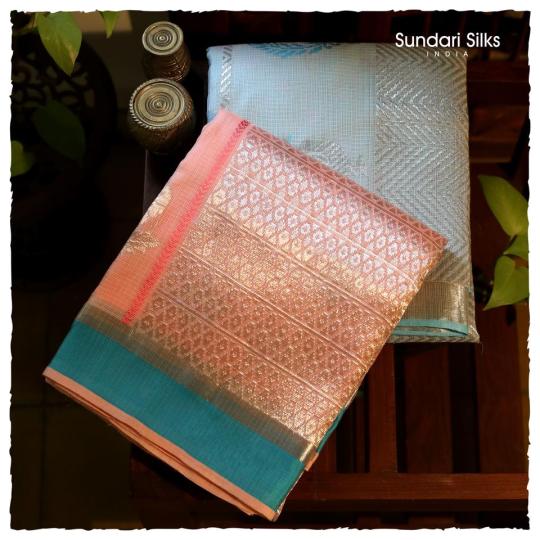
Buy Kota Silk Sarees Online | Handicraft Sarees | Pastel Color Silk Sarees - Sundari Silks
Dancing its way into a variety of avatars, the peacock has become a magnificent motif that has made a lasting impression in our hearts and in our country's handloom weaves for centuries. It seeps its way as an important character in every kind of fabric and exhibits exceptional grace and grandeur. These Kota Silk Sarees in pastel palettes are adorned with geometric, floral patterns and minimalistic peacock motifs that come alive in the warps and wefts.
Shop now: www.sundarisilks.com/collections/kota-sarees
Visit our website: www.sundarisilks.com
#sundarisilks#kotasareeonline#handlooomsilksaree#sundarisilkssaree#printedsarees#koraisilksaree#purecottonsilksaree#cottonsaree#purekanchipuramsilkarees#sareeonlinechennai#korvaisilksareesonlineshopping#bestsareecollectioninchennai#bestsareecollectioninmumbai
0 notes
Text
Yadavindra Gardens
Location: The garden in the city of Pinjore on the Ambala-Shimla road, near the ancient 8th century open-air archaeological museum site of Bhima Devi Temple Complex, is 22 kilometers (14 mi) from Chandigarh, 5 kilometers (3.1 mi) from UNESCO World Heritage Kalka–Shimla Railway and 255 kilometers (158 mi) from Delhi. It is approachable by road, rail and air from all parts of the country.
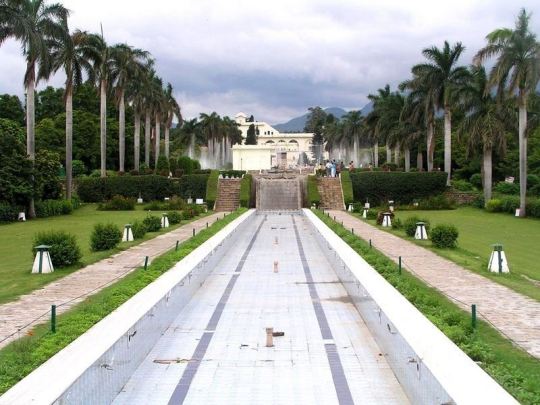
History
In 1775, the Maharaja of Patiala Amar Singh bought it from the King of Sirmur State Jagat Prakash.[4]
English author-painter C.M. Villiers-Stuart, who resided in the gardens for a time, included a description in her book on "Gardens of the Great Mughals" (1913). She wrote
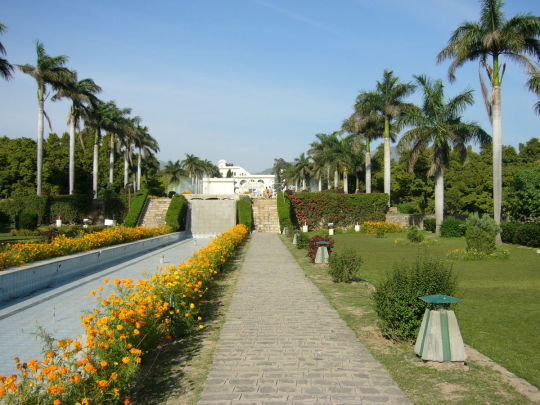
Fair and festivals[edit]
See also: Surajkund International Crafts Fair, International Gita Mahotsav at Kurukshetra, Ballabhgarh Kartik cultural festival, and Haryana State Farmer's and Agri-tourism Fair
Special festivals such as the Pinjore Baisakhi festival (spring festival) in April, Pinjore Mango Mela in July and Pinjore Heritage Festival in December are major annual celebrations at the gardens.
Pinjore Baisakhi Festival[edit]
Pinjore Baisakhi Festival, a two-day spring festival of Vaisakhi is usually held in April of every year, with regional gourmet food, traditional handlooms and handicrafts, live folk arts and cultural performances, specially by the Haryana State Department of Information, Public Relations & Cultural Affairs at 6 pm.
Pinjore Mango Fair[edit]
Pinjore Mango Festival, a two-days summer mango fair held every second weekend of July since 1992 by Haryana Tourism and Department of Horticulture, Haryana, at the historical Mughal Gardens at Pinjore to celebrate and promote India's status as world's largest producer of the king of fruits mango by encouraging farmers to adopt technology for increasing production and quality. Hundreds of appetising varieties of mangoes from as far as Maharasthra, Bihar, Uttar Pradesh and also from Haryana, Himachal and Punjab arrive here, delighting everyone with their fragrance, taste, hybrid shapes and quality. The festival entails mangoes competition, carts competition for school students, cultural programmes, crafts bazar, food court and evening cultural performances. Government of Haryana decided to upgrade the festival to an international festival from 2018 onward, by inviting competitive entries, exhibitions and cultural performances from all other nations.
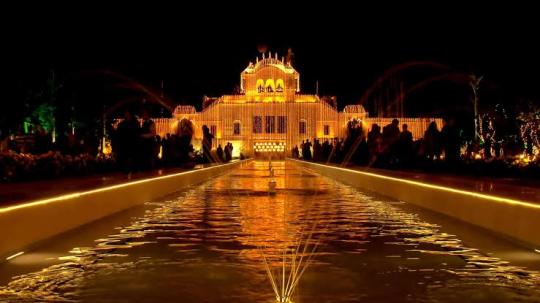
Nearly 4,000 entries are received for the competition across different categories of mango, including nearly 3,500 entries for various species of mango and nearly 500 entries of mango products such as pickle, chutney, jam, pulp, juice, squash and mango leather. These entries are judged by the expert scientists from Chaudhary Charan Singh Haryana Agricultural University (Hisar), Maharana Pratap Horticultural University, Karnal,[5] Punjab Agricultural University (Ludhiana), and Indian Agricultural Research Institute (Modipuram, UP). The popular varieties in the competition are Alphonso, Amrapali, Chaunsa, Dasheri, Langra, Malda, Malika, Ramkela pickle variety, Ratol, Totapuri and many more. haryana Kesari (for entries from Haryana), Hind Kesari (for entries from other parts of India) and Aam Kesari (for entries any part of the world) titles are awarded with winners shield and certificate.
A splash of festivities and colors of Haryanvi cultural extravaganza make this event far more popular, this attracting mango enthusiasts from all spheres of life. During the day students from different schools perform various competitive cultural programs, such as dance, music, Rangoli, etc. In the evening, artistes from the North Zone Cultural Centre present a colorful cultural programmed of folk songs and dances, such as Haryanvi music and dance, Punjabi music, Folk dances of Punjab, Himachali folk dances and Indian classical dance.
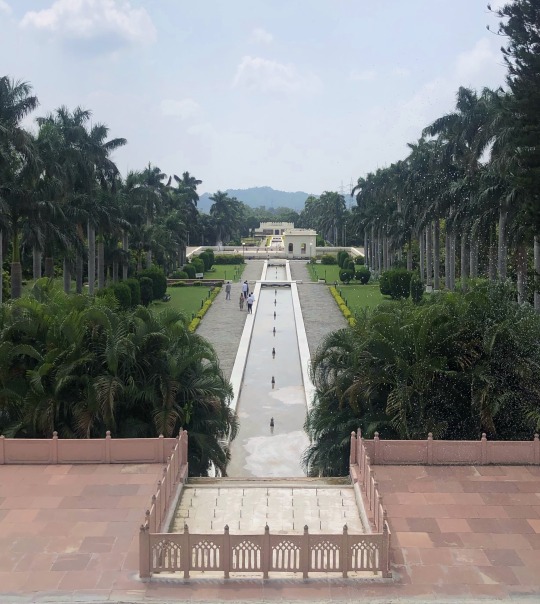
1 note
·
View note
Text
Prabhu Shriram spreads the fragrance of Indian values and ethos at India International Trade Fair 2022
Mode Retails Sales and Marketing Pvt Ltd., one of India’s leading manufacturers of incense sticks and natural incense based products under their flagship brand, Prabhu Shriram premium Agarbatti and Dhoop, is a participant at the 41st India International Trade Fair. The 14-day mega fair commenced at Pragati Maidan, New Delhi on 14th November. The grand event was inaugurated by Shri Piyush Goyal, Minister of Commerce and Industry, Consumer Affairs, Food & Public Distribution and Textiles, Govt. of India. Several other dignitaries including Smt. Anupriya Patel, Minister of State for Commerce and Industry and Shri Som Prakash, Minister of State for Commerce and Industry, were also present at the occasion.
Prabhu Shriram premium Agarbatti and Dhoop is showcasing its fragrant innovations at Stall No. 12C located in Hall No. 12A. Prabhu Shriram as a popular incense stick brand has been synonymous for promoting Indian values and ethos amongst the youth and the society as a whole with its divine and fascinating product range. Some of Prabhu Shriram’s benchmark incense collections include the Shripad Ramayana Series, which has been inspired from ten most significant events of Lord Shri Rama’s life; the Temple collection which is based on India’s most famous temples and holy places; the Meditation Series, the Lifestyle series and various other incense collections inducing every natural fragrance on earth including their fruit and flower series. Products from Prabhu Shriram are known for their natural ingredients and charcoal free product range which exude organic fragrances and are completely safe for the environment.
A confluence of commerce and businesses from all corners of the world, IITF holds the reputation of one of India’s largest and most renowned platforms for small, medium and large traders. Visitors to the Trade Fair can expect an array of art, culture, handicrafts, handlooms, home furnishings, furniture, fashion trends, food items, electronics, technology and a lot more. This year the theme of the exhibition is ‘Vocal for Local, Local to Global’. More than 2000 domestic and foreign exhibitors will be showcasing their products at the fair. A total of 12 countries including Afghanistan, Bangladesh, Bahrain, Belarus, Iran, Nepal, Thailand, Turkey, the Uk and the UAE will be participating in the fair. The fair will be open for business visitors from 14th to 18th November and for the general public from 18th to 27th November.
0 notes
Text
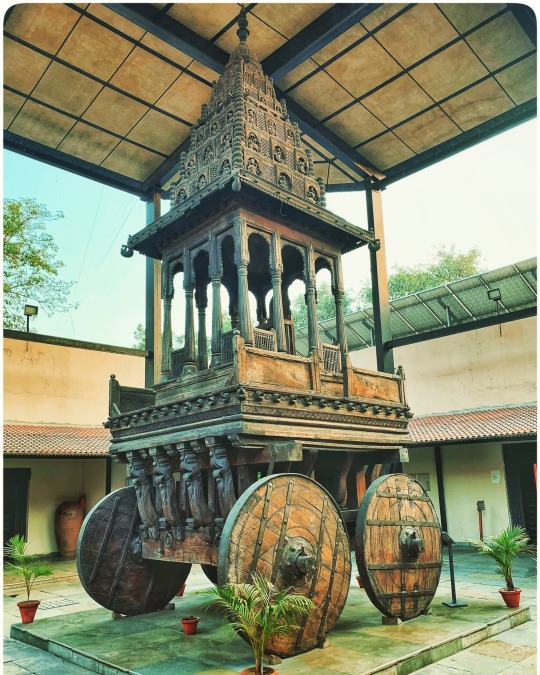
"ITS A LOVELY EXPERIENCE WALKING AROUND A MUSEUM BY YOURSELF"
The grand looking main entrance of the museum was made up of stone and had a certain feel of a Buddhist monastery. As I entered the zone, I felt a serene air all around me. The area was fairly spacious and was wholly covered in tree shades.
It was 12 noon during weekdays. I had reached this offbeat gallery known as National Crafts Museum. It was located at a corner under the clump of dense trees near Pragati Maidan, opposite the majestic Purana Qila. This place celebrates the rich, diverse, and practising craft traditions of India and was designed by the renowned architect Charles Correa in 1956.
There was the encircled courtyard that contained a vast collection of life sized statues and utensils from ancient civilisations like Harappa and Mohan Jodaro. Several people were sitting around these antiques. Some were even meditating in the quiet.
The museum had a large establishment with the reception area on the front. Another section was dedicated to the main museum which boasted of all the handicrafts from the country. At present the museum collection consists of over 33,000 specimens in various crafts acquired from all the Indian states over a period of 60 years. The collection reflected the continuing traditions of handicrafts and handlooms of the indian culture. It consisted of a variety of traditional artifacts such as Textiles, metal lamps, sculptures, utensils, Wood-works, Folk/tribal paintings , range of cane and bamboo crafts, clay and terracotta figures and a lot more.
As I reached the middle of the courtyard, I left astonished to see a giant wooden chariot which was astounding in its size and design.
"This beautiful artefact was designed by the artisans of Mahabaleshwar" said Bhim singh, the chief guard of the museum, who has been on duty for 20 years.
Though there were several other artefacts in the museum but this particular antiquity was my personal favourite.
The museum also had its own amphitheatre dedicated to the special events. It was made up of terracotta stone and looked like some Spanish coliseum. Another separate area behind the main foundation was dedicated to the craftsmen exhibitions area. It was occupied by the artisans from all over the country.
Next to this gigantic structure was the gallery dedicated to textiles which hosted an extensive collection of traditional Indian textiles which covers the vast range of hand-woven and handcrafted techniques found throughout India. The exquisite variants of textiles include Kalamkaris, Jamawars, Pashmina and much more.
To my much surprise, There was also a very alluring and serene open air restaurant Cafe Lota which was set up under the Bamboo shades and dense trees. Everything had a wooden and greenish feel even the waiters were wearing the brown coloured uniforms. The cafe offered a delicate range of vegetarian and non-vegetarian Indian cuisine with regional flavours. It also has received an excellent reviews of the most prominent food connoisseurs. Another attached outlet to the cafe was the Lota shop which showcased a whole range of contemporary craft products on art, craft and design. It also keeps the artifacts made by the crafts persons participating in the craft demonstration programme after they are gone back. The shop is considered to be one of the best in the city.
The rare and finest specimens of traditional Indian handicrafts and handlooms are preserved with the objective that these would serve as source material for the revival, reproduction and development of Indian crafts. These source materials are meant for the master craftsmen, art-historians and craft designers along with the people who are interested to know our age-old cultural heritage. Museum is a special attraction for foreign tourists who wish to have a glimpse of our material culture.
Place: National Crafts Museum, New Delhi
Date: 22 December.
•For more posts like this, follow our blog Epiktravel on facebook, instagram and tumblr.
#travel#photography#nature#landscape#adventure#travelphotographyoftheday#amazing#outdoors#earth#hiking
7 notes
·
View notes
Text
Ethnic Decor
Apart from adding an close-to-nature and earthy signature, terra-cotta has the benefit of being comparatively wider and more
economical compared to its other metal counterparts. Terra cotta artifacts are more plentiful enough to suit almost any budget and
are available nearly anywhere, be it at a private trader a cabin or nation emporium, a craft bazaar and sometimes even at a road
side stall. Indoor Spaces Simple Affordable Decor Steal a Deal Simple décor that is affordable could jazz any space up and create
a house a home. You do not have to invest a chance to give your home a appearance. All you'll need is some imagination.
Terra-cotta murals are a rage today plus they make an attractive visual focal point in a place. Occasionally adding a terra-cotta
mural into the family area, where friends can amuse can become a fantastic idea because not only do we get to hear many
compliments but in addition, it turns out to be a party conversation starter. However, if you never desire to visit the mural
manner, then another choice would be to go warm, honey-colored wall from your kitchen or the living room, makes for a comfy
ambience. Even Carpets and indian durries or rugs pep up the floor. Since rugs are difficult and costly to keep up, a rug may be
all that is necessary to lift a liveable area. The carpeting is ideal for living meditation and yoga rooms rooms and other spaces.
Cushion covers and pillow-case bring cheer to any room. Cushions with covers from patchwork, hand block prints, cottons, and
handlooms are available in a number of stores. Rather than investing in new light, adding a lampshade, paper lamps and paper
lanterns to your own room will give a nice shine to it. Carpet dividers for windows appear simple yet very elegant. Cotton and
hand loom drapes are fairly priced and can be shifted in a couple months or so to give your room a brand new look.
youtube
Terracotta
artifacts such as figures Pots, ash trays, baskets, idols and vases add a touch. Basic cane furniture like sofa sets, simple,
center dining table dust bins, with a glass top. Dining table and chairs and beds with side tables will be an practical
possibilities for a new couple setting up home. Add ceramic fittings, a few earthenware artifacts along with stoneware to finish
the appearance. To generate a romantic appearance, with buffed or glazed terracotta tiles or in the dinning room is option that is
useful in addition to a decorative. Not only are these tiles offered in unique shapes and hues, but they also help to keep the
area cool. Warm and conventional, these tiles incorporate a comfy and charming effect. Based on where you want to make use of
terra cotta at the house you'll be able to pick from many different artifacts. Tiles and garden pots for even the family room or
your patio, bowls and curios for figurines, your mantelpiece, lamps and sprays in the balcony, all the options are lots. The
classic appeal of terra cotta is it in fact and never dies. A weekly dusting or draining suffices. These artifacts age gracefully
and also add flair f elegance. Handwoven Wonders Let's start out with the walls. Instead of going in for huge paintings or murals,
frame photographs shot by members of your family members or by yourself and hang up them. For folk or tribal art is put-up by a
appearance. They are available and most affordable. Only a new coat of paint onto the walls can alter your dwelling. Or else get 1
wall. When you have small kids, set up a felt board in their own bedroom or even at the living room and snare up their works of
art, paintings, paintings, cards etc.. This not only makes the area look more vibrant, but it gives an extremely personal touch to
your property. Whatever your requirement might be, terra cotta is now an increasingly common decoration choice for both designers
and architects of commercial spaces. Terracotta's appeal and the beauty is 1 thing that will never go out of fashion. Terra cotta
is no longer restricted to the roofs but has become increasingly used in your home. Take your choice from an assortment of options
which range from murals and tiles to figurines, bowls, pots and of course the well-known Pots. There is in deep tones with fresh
blossoms and fresh blossoms A water-filled Pots a beautiful way to add a welcoming touch to your dwelling. check my blog In door plants using
plain or decorative pots are a relatively affordable, easy way to spaces. One long stemmed rose or perhaps a sprig of orchids at a
slim vase or slim jar looks tasteful. A good currency plant creeper put in a vase looks fine. The look is very in with sleek,
clean lines being hot. Low hand woven chairs and chairs, which are offered at state emporia and in interior decor exhibitions, are
of use and reasonably priced. Add a cushion or 2 and you have seating arrangement. Cover old tea boxes with table clothes and also
convert them to sideboards or negative tables. A single bed can be transformed to an attractive divan, which acts as a bed through
the night and also a couch during the day time. Terra-cotta presents possibilities to enhance the attractiveness of a garden. The
austere brown-red tone of terracotta matches the plants' green coloration. Add large or small terra cotta planters with some vivid
plants and add a statuette in terracotta or maybe a bird bath to a garden and we're finished. Animal or Equestrian figurines at
terracotta are a favorite pick even or to decorate the garden to add a more ethnic touch to the door step. Another choice is to
find exactly the nameplate at the entranceway done in glossy terra cotta in vibrant colors, these days. Scout around retail
stores, market bazaars, flea markets, art snatches and government emporia and you'll hit upon a bargain for the home. And not all
handicraft and life style stores stock only luxury, costly services and products. Look around and you'll find some very simple and
inexpensive home accessories.
1 note
·
View note